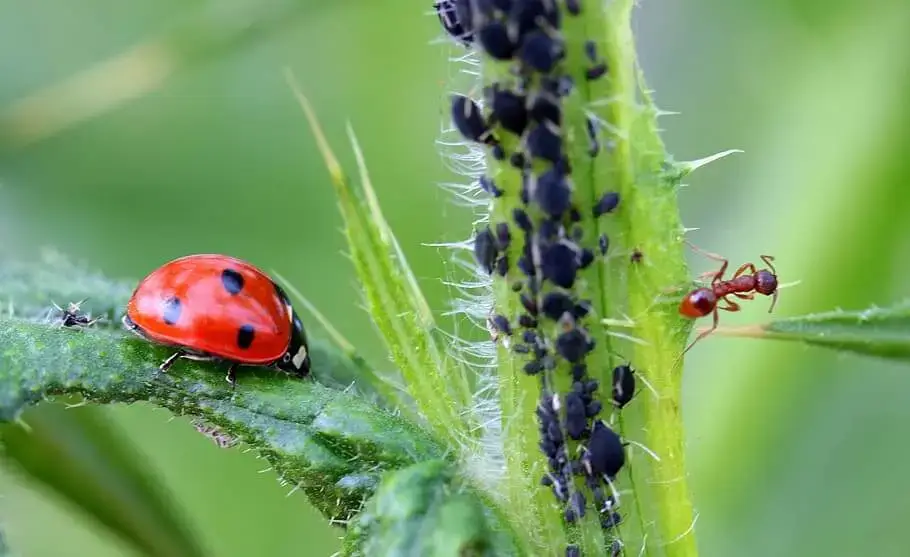Introduction
Growing your own vegetables may be a joyful and gratifying activity. Dealing with pests is one of the biggest obstacles, but it frequently comes with a fair number of drawbacks. The leaves, stems, and fruits of our food plants can all be harmed by these small intruders. To maintain a healthy garden and increase production, it’s essential to identify and successfully manage vegetable pests. In this blog post, we’ll look at some of the most prevalent vegetable pests, learn how to recognize them and talk about practical pest management strategies.
Identifying common vegetable pests
Aphids:
These are small insects with soft bodies found in various colors. They commonly live on the undersides of leaves in clusters. They cause curling leaves and stunted growth by sucking sap from the plants.
Caterpillars:
These are another most common pest in vegetables that can be easily identified from their segmented body structure and chewing mouthpart. Caterpillars are the larvae of butterflies and moths. Cabbage loopers, tomato hornworms, and corn earworms are some common caterpillar pests.
Whiteflies:
They are mostly found in large quantities on the undersides of leaves. Whiteflies are tiny, white-colored winged insects. They feed on plant sap and excrete honeydew, leaving a sticky residue that leads to the growth of black, sooty mold.
Slugs and Snails:
These are mollusks causing serious damage to young seedlings and tender leaves. They cause irregular holes in the leaves and a silvery slime trail.
Flea Beetles:
These insects are shiny beetles that can fly and jump like fleas. They commonly feed on the leaves of vegetables and damage them, causing tiny holes in them.
Prevention and cultural control
Healthy Soil:
Keeping the soil healthy is the primary importance for establishing defense against pests. It promotes the steady growth of plants and also endures pest attacks. Soil can be maintained healthy by regular soil testing, proper drainage, and the addition of essential organic matter.
Crop Rotation:
It is also a natural and effective method to break the cycle of pests and reduce their growth. By changing the families of plants, the pests growing on specific plants are not able to find their permanent home in the crops and struggle to find their preferred host plants.
Companion Planting:
This is the concept in which companion plants have the properties to attract beneficial insects and are grown together with vegetable plants. These plants can resist aphids and other pests. An example of a natural pest-repellent plant is marigolds or nasturtiums.
Physical Barriers:
Physical barriers such as row covers, netting, or screens can be physical barriers to controlling pest growth. This method mainly works to prevent flying insects like aphids and caterpillars from entering the fields.
Weed Control:
Weeds provide shelter to pests as they are a suitable home for pests. Thus, it is necessary to regularly check on the weeds and remove them so that pests cannot stay between the crops as permanent guests. Regular weeding ensures a less favorable environment for pests.
Organic and chemical control methods
Biological control:
The use of beneficial insects like ladybirds, lacewings, and parasitic wasps can naturally reduce pest populations. These insects are a sustainable and eco-friendly method of pest management since they eat bugs or their eggs.
Organic Insecticides:
Neem oil, pyrethrum, and insecticidal soap are a few examples of organic insecticides that can be effective against a variety of vegetable pests. They provide a safer option for insecticides made of synthetic chemicals.
Integrating pest management:
IPM, or integrated pest management, incorporates a number of pest control techniques, including cultural control, biological control, and, where necessary, the targeted application of pesticides. It emphasizes keeping an eye on pest populations, starting with the safest options, and turning to chemical management as a last resort.
Chemical pesticides:
Chemical pesticides can be employed as a last resort if all other measures are unsuccessful. To minimize harm to beneficial insects, people, and the environment, it is crucial to carefully read label directions, select the least harmful choice, and apply chemicals sparingly.
Conclusion
Although dealing with crop pests is an unavoidable aspect of gardening, it need not be a difficult process. Common vegetable pests may be identified and their life cycles understood, allowing us to avoid and control the harm they do by taking preventative measures. There are many ways to safeguard our vegetable crops while using less toxic pesticides, from cultural practices to organic and integrated pest control tactics. We can build a healthy vegetable garden that gives us many, pest-free crops by using these techniques.
Keep in mind that effective pest management necessitates constant monitoring, flexibility, and a balance between pest control and preserving a healthy garden ecology. Vegetable pests can present problems, but with perseverance and hard work, we can conquer them and reap the rewards of our labor.

